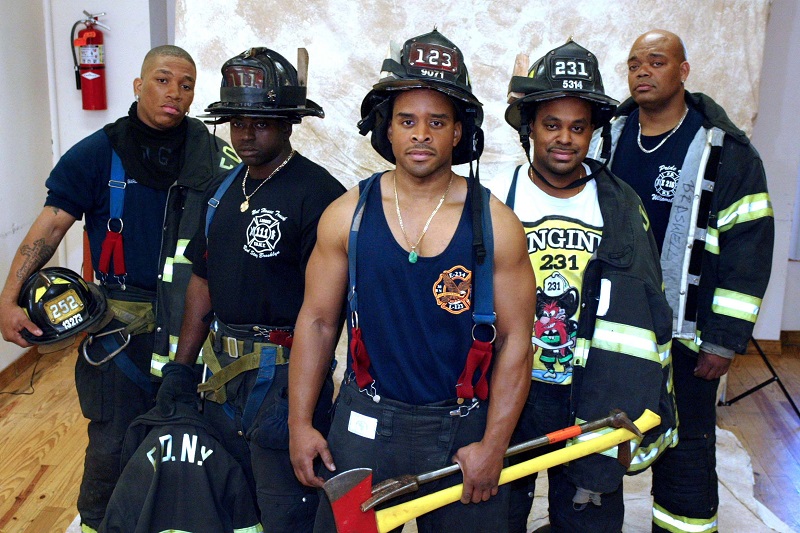
Introduction to the Inspiring Life of Author Mildred D. Taylor
Introduction You’ve probably read a few books in your lifetime. But have you ever read a book that changed your life? That’s what Mildred D.

In our culture a firefighter is termed “an unsung hero” of our society, and the responsibilities stretch far beyond the understanding of a layman. While we think that their only job is to fight fires, they also respond to medical emergencies, assist in search and rescue missions, help with traffic accidents, and provide general public safety.
In doing all the above things, they put their lives at life-threatening risks and do a great service to the community.
So, do you want to become a firefighter? Are you aware of the requirements, application procedure, and detailed job roles?
Don’t worry if you don’t know these things. This article will cover the basics and different aspects of a firefighter’s job.
Pathway to Becoming a Firefighter
Besides basic education and physical fitness, becoming a firefighter in the U.S requires fulfilling several other requirements. Let’s look at those requirements and the exact career path of becoming a firefighter in the U.S.
In terms of education, firefighters need to have a high school diploma or the General Equivalency Diploma (GED).
Moreover, candidates need to be physically fit, pass a strict criminal background check, and also successfully clear all drug tests. Plus, they must also hold a valid driving license.
Further, some states might also put a limitation on age and only induct candidates between 25 to 30 years of age.
Generally, fire departments recruit candidates from job fairs or screening events to take written, verbal, and physical tests.
However, you’d need to be highly patient because the hiring process is usually quite extensive. The whole process is divided into different rounds; after the initial written test round, the participants are interviewed and often have to take additional evaluations.
The written test would include questions around reading comprehension, spatial awareness, mechanical reasoning, logic, observation, and memory.
On the other hand, the physical test would be a little too challenging. Therefore, the test is named Candidate Physical Ability Test (CPAT) and includes stair climb, hose drag, equipment carry, ladder raise and extension, forcible entry, search, rescue, ceiling breach, and pull.
Once you clear the written and physical tests, you’ll be admitted to the fire department’s academy. The fire academy lets you focus on classroom and hands-on work and achieve Firefighter Level I and Level II certificates.
From there on, you will start working as a firefighter and can opt for further education to specialize in a specific firefighting role.
Fire departments in selected states might require you to obtain an Emergency Medical Technician (EMT) license before you officially start working as a firefighter.
EMTs are often called out for emergency medical situations alongside regular firefighting tasks.
Some fire organizations host accredited apprenticeship programs that combine classroom training with field internships that can take up to four years to complete.
Most local firefighters take the “volunteer” route for getting into this highly competitive field. So how do they do that?
Departments frequently have openings for people to perform various volunteer tasks, including community service. Your job might be to help the station staff, but it will help you see things closely and build connections before you formally apply for a firefighting job.
What subjects do Fire Fighters study?
Firefighting studies equip the candidates with the right knowledge to go out in the field and handle all situations efficiently. While it does help to have some volunteer experience, the real knowledge is learned in formal education through the following topics:
What do firefighters do?
Firefighting is generally associated with putting out fires only. Though it’s the defining role, however, it is not the only aspect of the job.
Full-time firefighters perform several tasks and respond to a range of calls: along with fire-related emergencies, they assist at car crashes, chemical spills, flooding, and water rescue.
However, a detailed job description of the typical firefighting job is as follows:
In terms of work routine, firefighters have a 24-hour work shift. Sometimes the work can be stressful and dangerous; however, firefighting personnel do feel a great deal of satisfaction by serving the community and saving precious human lives.
What job roles do they have?
As we established that firefighters have different tasks, this implies that firefighters do have different job roles other than the usual field offers.
Following are the few job titles and ranks that firefighting professionals have:
Fire Fighter’s Career Outlook
As much as the risk they take, firefighters do get paid well for their challenging job. The average salary for firefighters in May 2020 was $52,500. This means that this profession not only gets you the respect and love of society, it also pays you well.
Moreover, the employment of firefighters is projected to grow at least 8 percent from 2020 to 2030, which is as progressive as the average for other professions. This shows that this career is in demand and will continue to provide employment opportunities in the future.
Excellent Learning Resources For Fire Fighters
Firefighters do need to constantly learn and upgrade their knowledge due to the sensitive nature of the job.
Thankfully, there are several online and physical resources to keep yourself updated. Moreover, these resources provide excellent information to those involved in the profession and teach fire prevention techniques to the common man.
The learning modules are appropriate for all fire service levels, all staffing types (career, volunteer, and combination), all states of the country, and all kinds of firefighting activities.
If you’d like to pursue firefighting as a career or gain general knowledge about firefighting techniques and preventive measures, the above-mentioned resources can prove to be useful.
#becomeafirefighter #careers #firefighter #firefighting #blackfirefighters #icanbeanythingiwanttobe

Introduction You’ve probably read a few books in your lifetime. But have you ever read a book that changed your life? That’s what Mildred D.

So you’re interested in becoming a podiatrist? That’s great! Podiatry is a fascinating and multifaceted field that can lead to a rewarding career. But before

If you’re not familiar with Sharon Flake, she’s a prolific author of young adult literature. Her books explore tough issues facing teenagers, from racism and

Hi, art lover! We wanted to introduce you to Shane W Evans, an extremely popular illustrator, and author. Evans was born in Columbus, Ohio, in